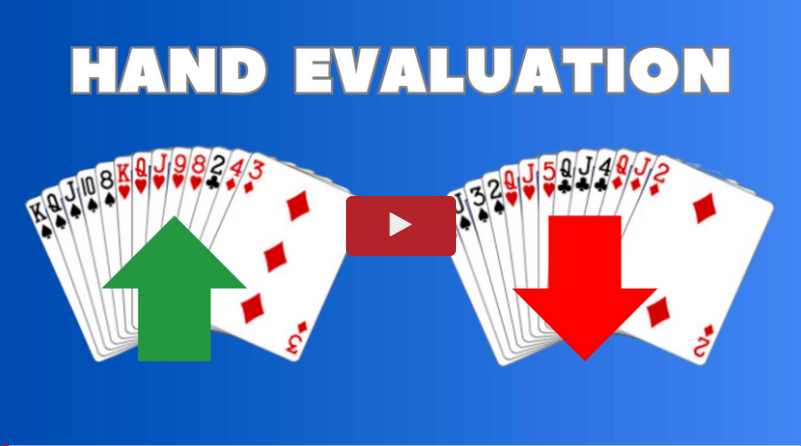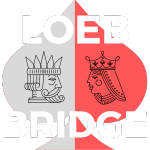 “Your skill as a bidder can be broken down into two areas: first, how well you understand the system you and your partner are using; second, how well you value your hand.”
“Your skill as a bidder can be broken down into two areas: first, how well you understand the system you and your partner are using; second, how well you value your hand.”
- Jeff Rubens, “Secrets of Winning Bridge”
Milton is the most common high card point valuation method
- Ace 4 HCP
- King 3 HCP
- Queen 2 HCP
- Jack 1 HCP
Tends to over value Queens and Jacks
Tends to under value Aces. Kings, and Tens
Marty Bergen recommends the following adjustments for HCP valuation.
- Ace 4.5 HCP
- King 3 HCP
- Queen 1.5 HCP
- Jack 0.75 HCP
- Ten 0.15 HCP
Because long suits offer trick taking potential, focusing solely on HCP isn't sufficient.
The Rule of 20 and the Suggestion of 22 are rules used to help assess whether to open a hand in 1st or 2nd seat. Both rules consider the combined length of a hand's two longest suits. With greater length, less HCP are needed to open the bidding.
Point count valuation methods are good tools, especially for balanced hands.
Using only point count will put you at a disadvantage compared to players who consider other factors:
- Suit length
- Intermediate cards
- Controls
- Fit with partner
- Unguarded honors
- Location of honors
The location of honors is important.
- Honors in a long suit tend to be more valuable than honors in a short suit because the honors may help establish length tricks. Conversely, honors in short suits are less valuable.
- Honors working in combination tend to be more valuable because they help promote winners
- Fast honors (Aces & Kings) tend to be valuable
- Slow honors (Queens & Jacks primarily) in the opponent’s suit are of questionable value
- Slow honors in your suit or partner’s suit are valuable because they strengthen the suit and help promote length winners
The 12 HCP hands below illustrate the power of honors working in combination in support of long suits.
| #1 ♠KQJ95 ♥KQJ84 ♦95 ♣3 | Likely to win 10 tricks opposite 2 Aces and a fit. |
| #2 ♠J9542 ♥86542 ♦AK ♣A | Might be tapped in clubs. Not clear 9 tricks are available opposite 2 Aces and a fit. |
The following table helps illustrate how honors working in support of long suits and honors working in combination provide more tricks, and merit an upgrade when evaluating the strength of your hand.
| Card Combination | 5 Tricks % | 4 Tricks % | 3 Tricks % |
| AKJ 432 | 50.5% | ||
| AKJ32 654 | 34% | 85% | 98% |
| AKQ2 543 | 35.5% | 100% | |
| AKQ32 654 | 68% | 96% | 100% |
| AQ432 765 | 34% | 85% | |
| AJT32 654 | 63% | 90% |
Note that the 5 HCP AJTxx combination has a higher trick taking expectation (3.5 tricks) opposite 3 small than the 6 HCP AQxxx combination (3.17 tricks) illustrating the power of 3 honors working in combination.
Good suit texture merits an upgrade. Intermediate cards help decrease losers in a suit. For example, you will win an average of 3.1 tricks holding ♠A32 opposite ♠JT654. Improving the long hand's texture to ♠JT954 positions you to double finesse, and will provide 3.56 tricks on average. Strengthening the texture to ♠JT984 allows you better handle 4-1 breaks, and win an average of 3.7 tricks.
See our Hand Evaluation video lesson.
Related articles
- "Parrish the Thought - Static vs. dynamic evaluation" by Adam Parrish (requires an ACBL logon to view)
- "Hand Evaluation" by Karen Walker
- "Hand Evaluation" by Larry Cohen
- "Pavlicek Point Count" by RIchard Pavlicek
- "The Power of a Five-card cuit" by Andrew Robson




